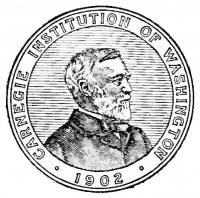Book - Developmental Stages In Human Embryos
| Embryology - 27 Apr 2024 |
|---|
| Google Translate - select your language from the list shown below (this will open a new external page) |
|
العربية | català | 中文 | 中國傳統的 | français | Deutsche | עִברִית | हिंदी | bahasa Indonesia | italiano | 日本語 | 한국어 | မြန်မာ | Pilipino | Polskie | português | ਪੰਜਾਬੀ ਦੇ | Română | русский | Español | Swahili | Svensk | ไทย | Türkçe | اردو | ייִדיש | Tiếng Việt These external translations are automated and may not be accurate. (More? About Translations) |
O'Rahilly R. and Müller F. Developmental Stages in Human Embryos. Contrib. Embryol., Carnegie Inst. Wash. 637 (1987).
| Online Editor Note |
|---|
| O'Rahilly R. and Müller F. Developmental Stages in Human Embryos. Contrib. Embryol., Carnegie Inst. Wash. 637 (1987).
The original 1987 publication text, figures and tables have been altered in formatting, addition of internal online links, and links to PubMed. Original Document - Copyright © 1987 Carnegie Institution of Washington.
|
- 1987 Stages: Introduction | 1 | 2 | 3 | 4 | 5 | 6 | 7 | 8 | 9 | 10 | 11 | 12 | 13 | 14 | 15 | 16 | 17 | 18 | 19 | 20 | 21 | 22 | 23 | References | Appendix 1 | Appendix 2 | Historic Papers | Embryonic Development
| Historic Disclaimer - information about historic embryology pages |
|---|
| Pages where the terms "Historic" (textbooks, papers, people, recommendations) appear on this site, and sections within pages where this disclaimer appears, indicate that the content and scientific understanding are specific to the time of publication. This means that while some scientific descriptions are still accurate, the terminology and interpretation of the developmental mechanisms reflect the understanding at the time of original publication and those of the preceding periods, these terms, interpretations and recommendations may not reflect our current scientific understanding. (More? Embryology History | Historic Embryology Papers) |
Developmental Stages in Human Embryos

|
And | 
|
| Ronan O'Rahilly | Fabiola Müller |
Carnegie Laboratories of Embryology,
California Primate Research Centre,
and
Departments of Human Anatomy and Neurology,
University of California, Davis
Carnegie Institution of Washington
Publication 637
1987
Dem Andenken von Wilhelm His, dem Älteren, der vor hundert Jahren die Embryologie des Menschen einführte und dem seines Protégé, Franklin P. Mall, dem Begründer der Carnegie Collection.

|

|
| Wilhelm His (1831-1904) | Franklin Mall (1862-1917) |
Contents
Preface

|

|

|

|
| Wilhelm His (1831-1904) | Franz Keibel (1861-1929) | Franklin Mall (1862-1917) | George Linius Streeter (1873-1948) |
During the past one hundred years of human embryology, three landmarks have been published: the Anatomie der menschlichen Embryonen of His (1880–1885), the Manual of Human Embryology by Keibel and Mall (1910–1912), and Streeter's Developmental Horizons in Human Embryos (1942–1957, completed by Heuser and Corner). Now that all three milestone volumes are out of print as well as in need of revision, it seems opportune to issue an updated study of the staged human embryo.
The objectives of this monograph are to provide a reasonably detailed morphological account of the human embryo (i.e., the first eight weeks of development), a formal classification into developmental stages, a catalogue of the preparations in the Carnegie Collection, and a reference guide to important specimens in other laboratories. The Carnegie staging system has now been accepted internationally and, when carefully applied, allows detailed comparisons between the findings at one institution and those at another.
The classifications and descriptions of stages 1–9 are based on light microscopy, and the criteria selected have stood the test of time. The present account is a revision of O'Rahilly's monograph of 1973. In stages 10–23, increasing attention is paid to external form, although internal structure is not, and should not be, neglected. Streeter's masterly account has been updated and is used here in treating stages 10–23. Many of Streeter's paragraphs have been left virtually unchanged (except for improvements in terminology) but others have been altered considerably, and much new material has been added.
Most of the drawings for stages 1–9 were prepared in the Department of Art as Applied to Medicine, the Johns Hopkins School of Medicine, under the direction of Ranice Crosby. Most of those for stages 10–23 are the work of James F. Didusch, although certain modifications in his terminology have been adopted.
A major change made here from Streeter's account is in the systematic inclusion of standard references. It should be stressed, however, that no attempt has been made to provide a comprehensive bibliography. Many more references can be found in a series of articles on the timing and sequence of developmental events, beginning in Acta anatomica in 1971 and continuing in the Zeitschrift für Anatomie und Entwicklungsgeschichte (now Anatomy and Embryology) from 1971 to 1983. For the nervous system, further references can be found in a continuing series of articles that began in 1981 in Anatomy and Embryology: stages 8–11 have already been published.
Particular attention has been paid to nomenclature throughout. Most of the terms used are in agreement with the Nomina embryologica. The latter, however, unlike the Nomina anatomica, is not exclusively human, and hence certain inappropriate terms have been replaced here.
It is appropriate to acknowledge here the great help provided by the National Institutes of Health, which have supported the writers' research (Grant No. HD-16702, Institute of Child Health and Human Development).
It is a particular pleasure to acknowledge the enthusiasm and collaboration of the late Dr. Ernest Gardner over many years, the friendship and assistance provided by Dr. Elizabeth M. Ramsey, and the continued encouragement of Dr. James D. Ebert, President of the Carnegie Institution of Washington, whose invitation to establish the first nine stages was made twenty years ago.
The authors wish to thank Mr. Ray Bowers and Miss Patricia Parratt of the Carnegie Institution's publications office for the exceptionally great care with which they brought this monograph to fruition.
R. O'R.
F. M.
January 1987
- 1987 Stages: Introduction | 1 | 2 | 3 | 4 | 5 | 6 | 7 | 8 | 9 | 10 | 11 | 12 | 13 | 14 | 15 | 16 | 17 | 18 | 19 | 20 | 21 | 22 | 23 | References | Appendix 1 | Appendix 2 | Historic Papers | Embryonic Development
| Historic Disclaimer - information about historic embryology pages |
|---|
| Pages where the terms "Historic" (textbooks, papers, people, recommendations) appear on this site, and sections within pages where this disclaimer appears, indicate that the content and scientific understanding are specific to the time of publication. This means that while some scientific descriptions are still accurate, the terminology and interpretation of the developmental mechanisms reflect the understanding at the time of original publication and those of the preceding periods, these terms, interpretations and recommendations may not reflect our current scientific understanding. (More? Embryology History | Historic Embryology Papers) |
Cite this page: Hill, M.A. (2024, April 27) Embryology Book - Developmental Stages In Human Embryos. Retrieved from https://embryology.med.unsw.edu.au/embryology/index.php/Book_-_Developmental_Stages_In_Human_Embryos
- © Dr Mark Hill 2024, UNSW Embryology ISBN: 978 0 7334 2609 4 - UNSW CRICOS Provider Code No. 00098G

